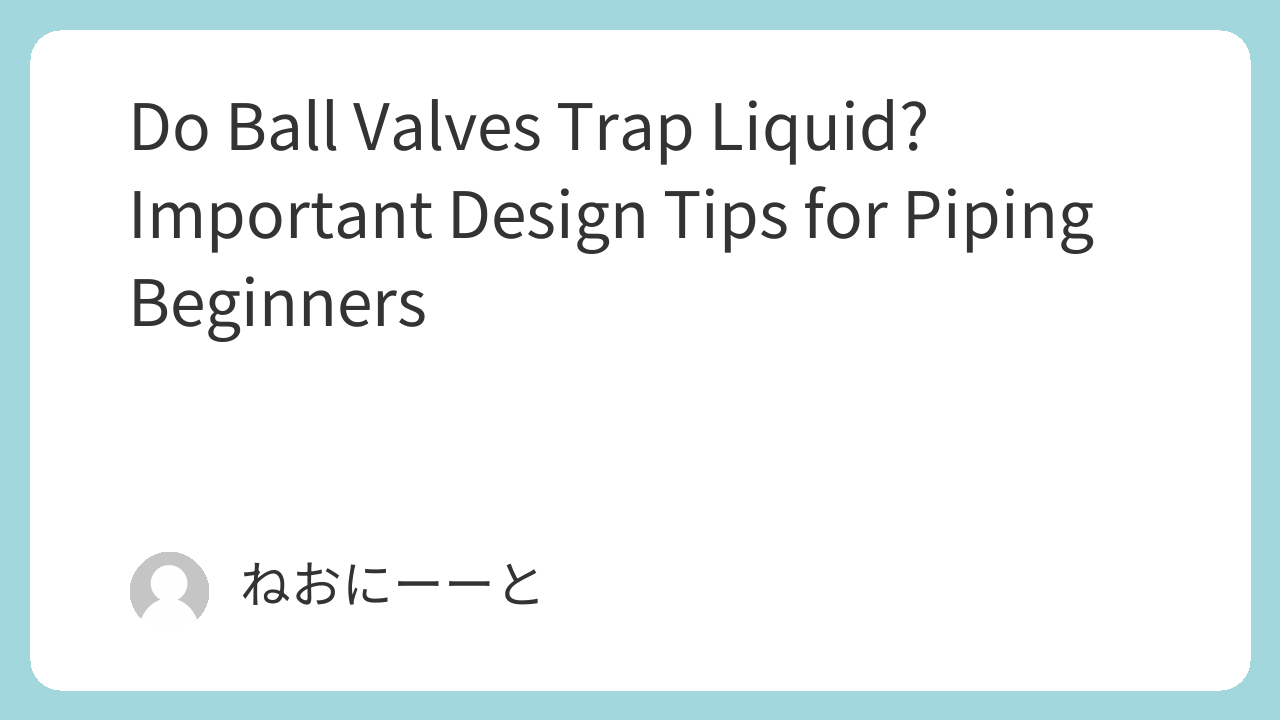Ball valves are simple, reliable, and commonly used in industrial piping systems.
But many beginners don’t know that liquid can stay trapped inside a closed ball valve — even after draining the pipes.
This can cause:
- Contamination of the next process
- Unexpected leaks during maintenance
- Safety hazards when handling dangerous chemicals
In this article, we’ll explain why liquid gets trapped, how it affects your piping system, and what to do about it. Let’s dive in.
This post is in a series about Valve
Why Diaphragm Valves Are Easy to Use and Ideal for Chemical Plants
How Automatic Diaphragm Valves Control Flow in Piping Systems
How to Choose Knife Gate Valves Based on Performance: A Practical Guide for Engineers
Why You Shouldn’t Overtrust Plastic Valves in Industrial Systems
Miniature Valves on Copper Tubes: A Simple Guide for Beginners
What Is a Ball Valve?
A ball valve controls flow using a rotating ball with a hole (called a bore).
When the bore is aligned with the pipe, liquid flows. When rotated 90°, the flow stops.
They are popular because:
- Simple on/off operation
- Low pressure drop
- Compact and durable
But there’s a hidden issue…
Why Does Liquid Get Trapped?
When a ball valve is closed, the liquid inside the bore stays trapped between the seats.
Even if the rest of the pipe is drained, this small amount of liquid stays inside.
This happens because:
- The ball is sealed on both sides by valve seats
- There’s no path for the trapped fluid to escape
This is especially critical if:
- The liquid is toxic, corrosive, or reactive
- You need clean or sterile conditions
- The system is opened for maintenance or inspection
Real-Life Risks
Imagine this scenario:
- You drain a pipeline with a ball valve
- The system looks empty
- A worker opens the valve…
- Residual liquid sprays out
This can cause injury, equipment damage, or contamination.
That’s why process safety standards require attention to this issue.
How to Avoid Problems
Here are practical design tips:
- Use valves with drain ports
Some ball valves come with a small drain that lets you release the trapped fluid safely. - Avoid ball valves where complete draining is needed
In hygienic or high-risk processes, consider diaphragm valves or plug valves instead. - Add a warning label
Let workers know the valve may contain residual liquid, especially before disassembly. - Check safety procedures
Always confirm pressure and contents before opening any valve.
Is It Always a Problem?
Not necessarily.
If you’re using water or a non-hazardous fluid, and the valve stays closed during maintenance, this might not matter.
But in chemical plants, pharma production, or toxic processes, trapped liquid must be treated seriously.
Summary
Let’s review what we learned:
- Ball valves can trap liquid inside the ball when closed
- This can cause unexpected leakage or safety issues
- Use drainable valves or design alternatives for critical processes
- Always follow safe maintenance procedures
Ball valves are useful — but understanding their hidden behavior is key to safe, reliable piping design.

Comments